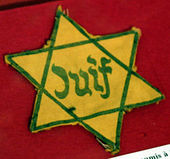Template:Pictorial-Islam-options: Difference between revisions
Jump to navigation
Jump to search
| [checked revision] | [checked revision] |
mNo edit summary |
mNo edit summary |
||
| Line 226: | Line 226: | ||
<option weight="1">{{Pictorial-Islam|1=Prophet Muhammad's Permanent Erection|2=[[File:Priapus Greek god.jpg|250px|link=Priapism - Permanent Erection]]|3=Priapism is a potentially painful medical condition, in which the erect penis or clitoris does not return to its flaccid state, despite the absence of both physical and psychological stimulation, within four hours. The name comes from the Greek god Priapus, a fertility god often represented with a disproportionately large and permanent erection. According to Islamic scripture, all Muslim males that are admitted to Paradise will technically suffer from priapisms (i.e. they "will have an ever-erect penis"). And the Muslim geographer and historian Abu al-Fida (1273 – 1331 AD) relates that Prophet Muhammad suffered from a death erection (a post-mortem erection, technically a priapism). ([[Priapism - Permanent Erection|''read more'']])}}</option> | <option weight="1">{{Pictorial-Islam|1=Prophet Muhammad's Permanent Erection|2=[[File:Priapus Greek god.jpg|250px|link=Priapism - Permanent Erection]]|3=Priapism is a potentially painful medical condition, in which the erect penis or clitoris does not return to its flaccid state, despite the absence of both physical and psychological stimulation, within four hours. The name comes from the Greek god Priapus, a fertility god often represented with a disproportionately large and permanent erection. According to Islamic scripture, all Muslim males that are admitted to Paradise will technically suffer from priapisms (i.e. they "will have an ever-erect penis"). And the Muslim geographer and historian Abu al-Fida (1273 – 1331 AD) relates that Prophet Muhammad suffered from a death erection (a post-mortem erection, technically a priapism). ([[Priapism - Permanent Erection|''read more'']])}}</option> | ||
<option weight="1">{{Pictorial-Islam|1=To You Your Religion and To Me Mine (Qur'an 109:1-6)|2=[[File:Al-Kafirun.png|215px|link=To You Your Religion and To Me Mine]]|3=This article analyzes the apologetic claim that Surat al-Kafiroon (the Disbelievers, Atheists) advocates religious tolerance and freedom. When read in context, like many other verses misinterpreted for apologetic purposes, Surat al-Kafiroon advocates the opposite of what is sometimes claimed. This surah is not a proclamation on religious tolerance and freedom or a recognition of religious pluralism. In fact, this surah unequivocally forbids inter-faith dialogue and advocates an "us versus them" mentality between Muslims and disbelievers. This is how the surah is understood by mainstream Islam and the majority of its classical and contemporary scholars. Furthermore, if the historical context were to be ignored, it would still remain an abrogated verse superseded by "the verses of fighting". ([[To You Your Religion and To Me Mine|''read more'']])}}</option> | |||
</choose><!-- HELP NOTES: <option>{{Pictorial-Islam|1=TITLE OF STORY|2=IMAGE LINK (SEE ABOVE FOR EXAMPLE)|3=TEXT OF STORY - SHOULD INCLUDE READ MORE LINK}}</option> --><noinclude>[[Category:Templates]][[Category:Random Templates]]</noinclude> | </choose><!-- HELP NOTES: <option>{{Pictorial-Islam|1=TITLE OF STORY|2=IMAGE LINK (SEE ABOVE FOR EXAMPLE)|3=TEXT OF STORY - SHOULD INCLUDE READ MORE LINK}}</option> --><noinclude>[[Category:Templates]][[Category:Random Templates]]</noinclude> | ||
Revision as of 13:14, 7 May 2013
Also see: Template:Pictorial-Islam
|
